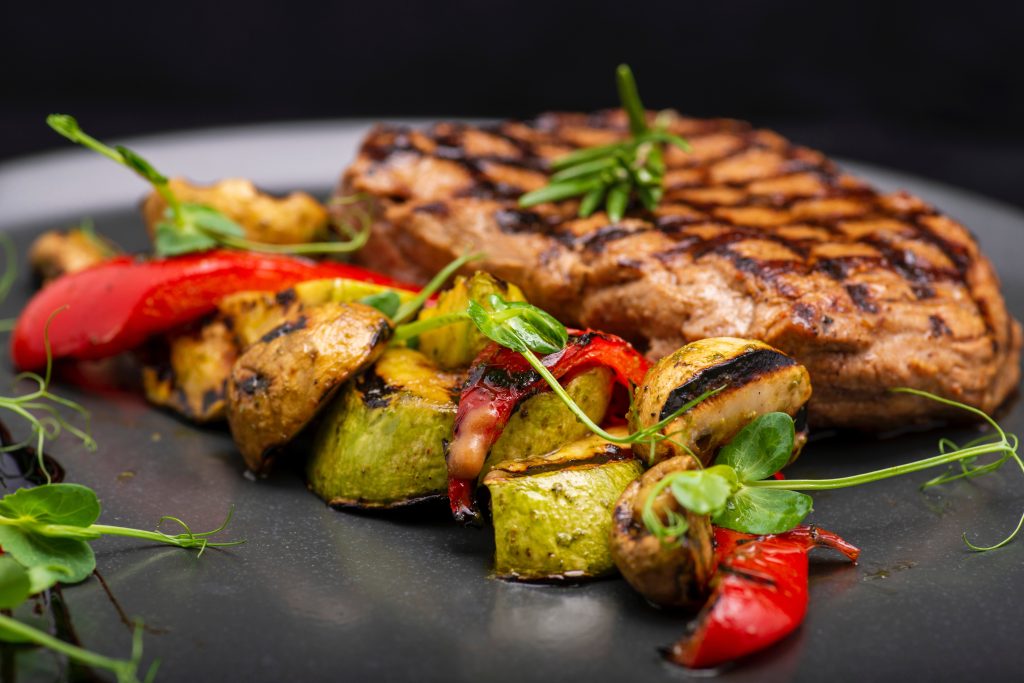Have you ever wondered, “What should I eat to feel my best?” or “How can I lose weight without starving?” The answer might lie in the past. Let me guide you on a journey back in time, to our roots, for some insights into optimal health.
Our ancient ancestors were survival experts, thriving on hunted animals, fish, wild fruits, and vegetables. These hunter-gatherers didn’t feast on modern-day processed foods, dairy, or grains. Their blueprint for nutrition has stood the test of time and has a lot to teach us even today.
Embracing the Old Stone Age: The Paleolithic Period
The Paleolithic period was marked by simple stone tools and a holistic approach to life – encompassing language, art, spirituality, and nutrition. Fast forward to the present: DNA evidence reveals that our physiological needs have mostly stayed the same over 40,000 years despite our advanced technologies and societal evolutions.
Think about it. You wouldn’t pour diesel into a car designed for gasoline, right? Similarly, our bodies perform best when fueled with the natural foods our ancestors hunted and gathered. The processed foods, cereals, dairy products, refined sugars, and fatty meats in many of today’s diets are contaminants, slowing our systems down, piling on weight, and harming our health.
Deviations from the Path of Nature
It’s astonishing how we’ve diverged from the natural path:
- Dairy: Our ancestors didn’t drink milk beyond infancy. Capturing and milking a wild animal? Nearly impossible.
- Cereal Grains: Contrary to popular belief, grains were rarely on the menu. Most often, they were a last resort during scarce times.
- Refined Sugars: Honey was their only sweet treat, and that too on a lucky day.
- Protein Intake: They primarily consumed wild, lean meats, leading to higher protein and lower carbohydrate intake than we see today.
- Carbohydrates: Their carbs come from wild fruits and vegetables, ensuring a balanced fiber-rich diet.
- Fats: Healthy fats like mono-unsaturated, polyunsaturated, and omega-3s were predominant, not the modern-day trans and saturated fats.
Decoding the Paleo Diet
The Paleo Diet is not just a fad from the past but a compass pointing us toward healthier living. It harmonizes with our body’s evolutionary design, prioritizing natural foods and shunning processed ones.
But what about the low-carb diets trending today? Let’s put things in perspective:
Diet Protein Carbohydrate Fat
| The Paleo Diet | 19-35% | 22-40% | 28-47% |
| Typical U.S. Diet | 15.5% | 49% | 34% |
| Low-carb Fad Diets | 18-23% | 4-26% | 51-78% |
It’s evident that while modern low-carb diets are high in fats and moderate in proteins, they often lack the balanced nutrition found in the Paleo Diet. Worse, they encourage unlimited processed meats and dairy consumption while restricting beneficial fruits and vegetables.
Take the Leap
Ready to harness the power of the Paleo Diet? Remember, it’s not just about weight loss but also about achieving a balance for lifelong health. As a health and fitness coach, I advocate returning to our roots. Let nature guide your plate. Fill it with natural, unprocessed foods and watch as your body transforms, energized, and rejuvenated.
Need personalized guidance on kickstarting your Paleo journey? Reach out today and embark on a transformative health journey, just as our ancestors would have wanted! 🍃🥩🍎🔥
Get in on the action and tune in to the Army Gymnastics Podcast today! Please find us on your favorite platforms, including Spotify, Apple, Google, Pandora, and Amazon Music. Don’t miss out on the latest and greatest from Army Gymnastics – start listening today on Spotify





